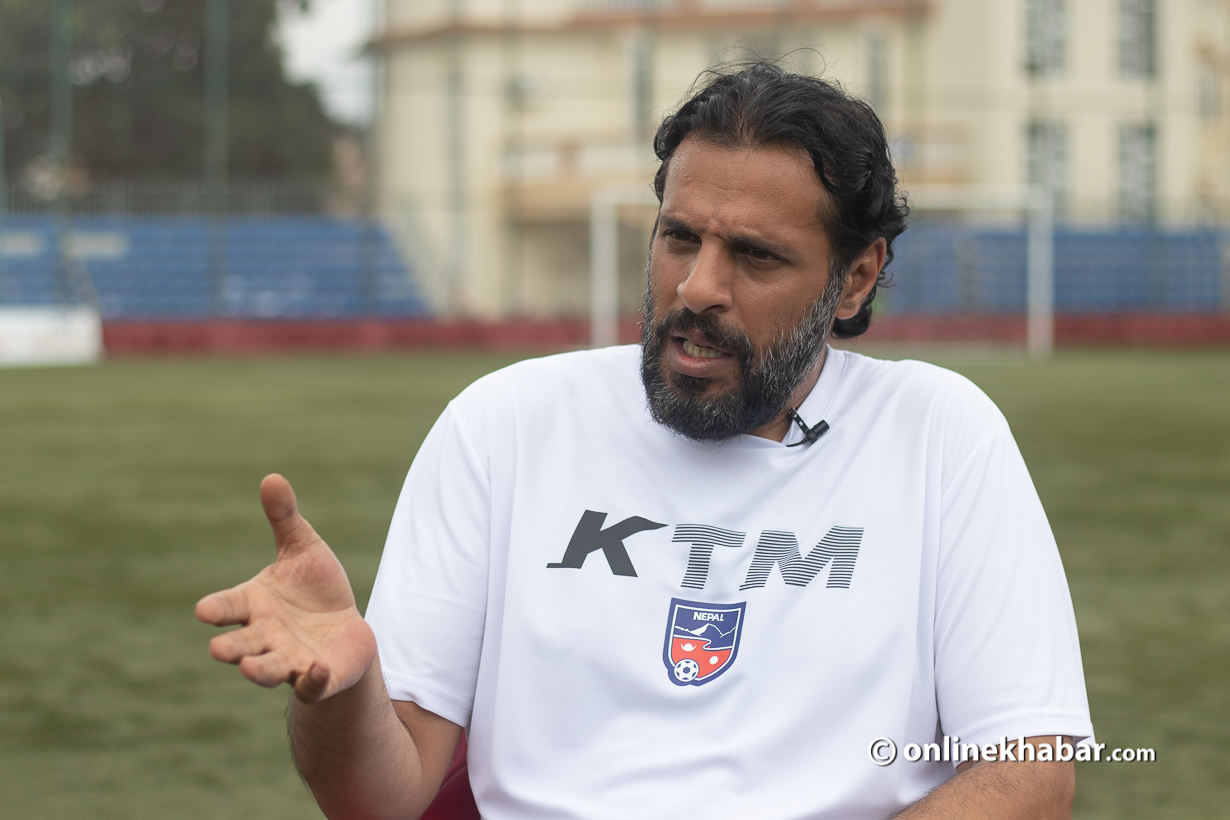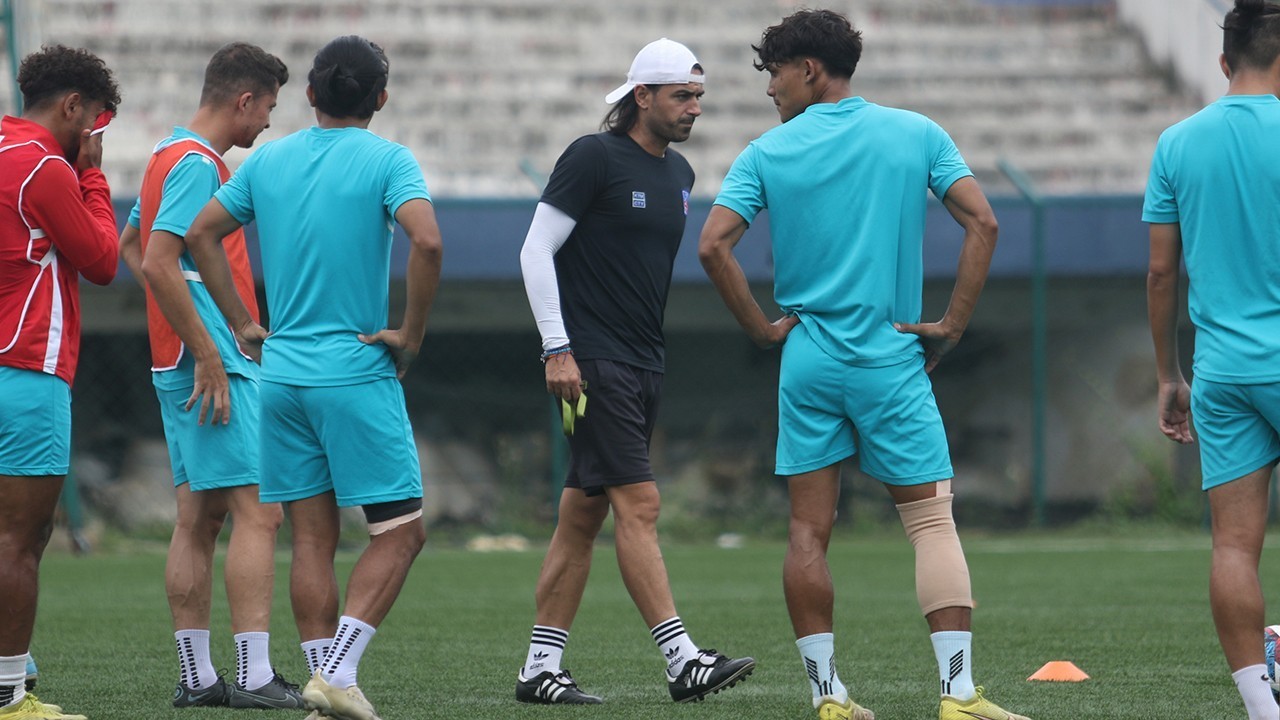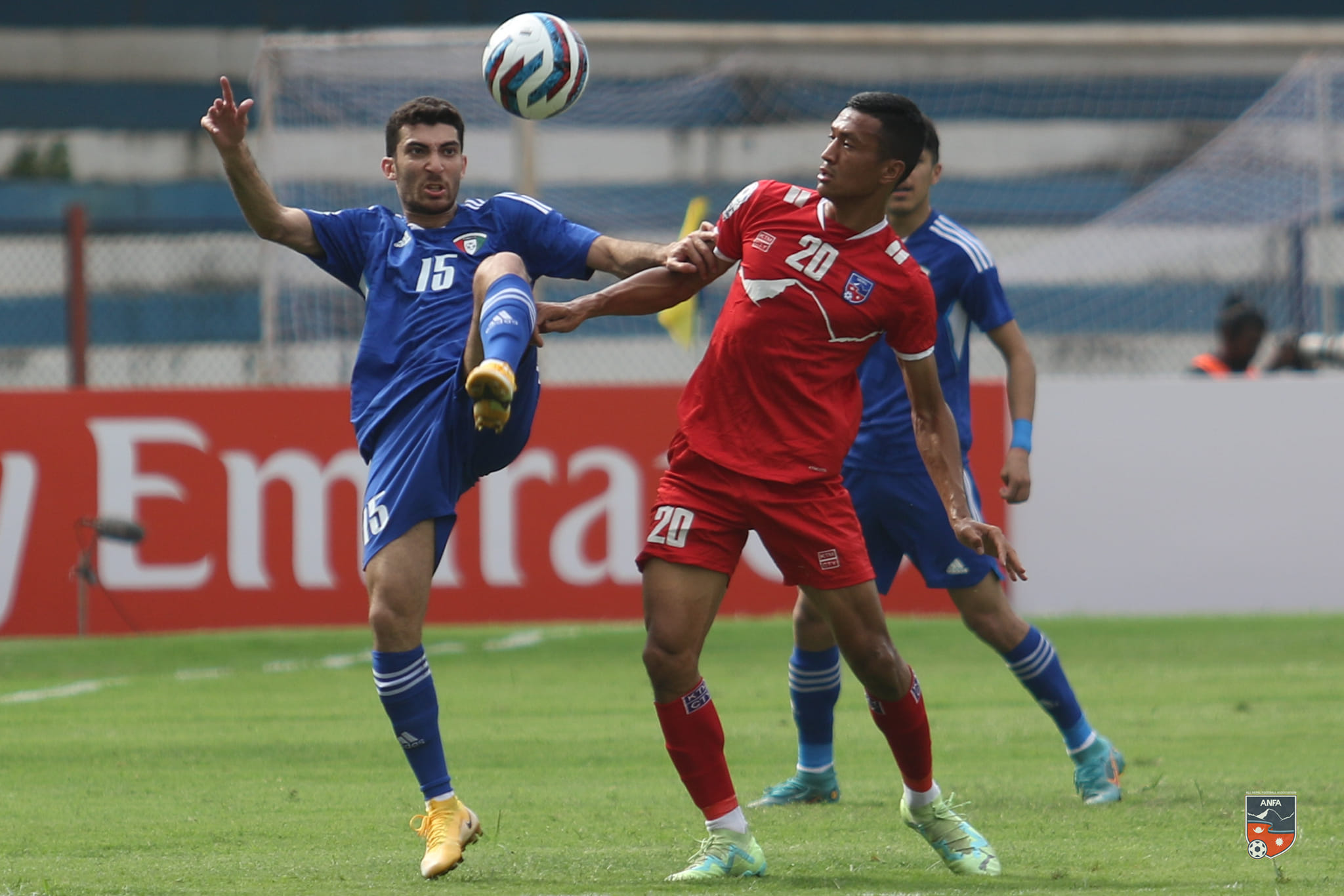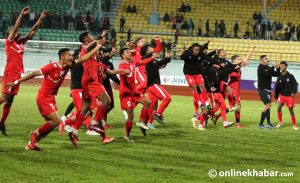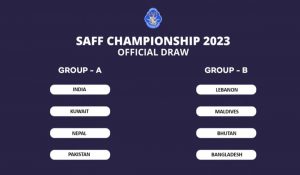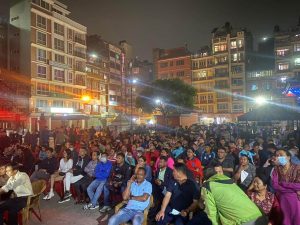On Friday, the head coach of the Nepali men’s football team, Abdullah Al Mutairi, claimed Nepal would not qualify for Asian Cup, stating the country’s football team does not have its base at the grassroots.
There are just two months left for the qualification matches, and on the very first day of special training, the head coach made such a despondent statement. This has definitely created disappointment among the football fraternity.
However, if you analyse the structure of Nepali football and opponents’ status, you know Abdullah Al Mutairi has made a realistic comment, at least for the next few years.
Don’t dream big
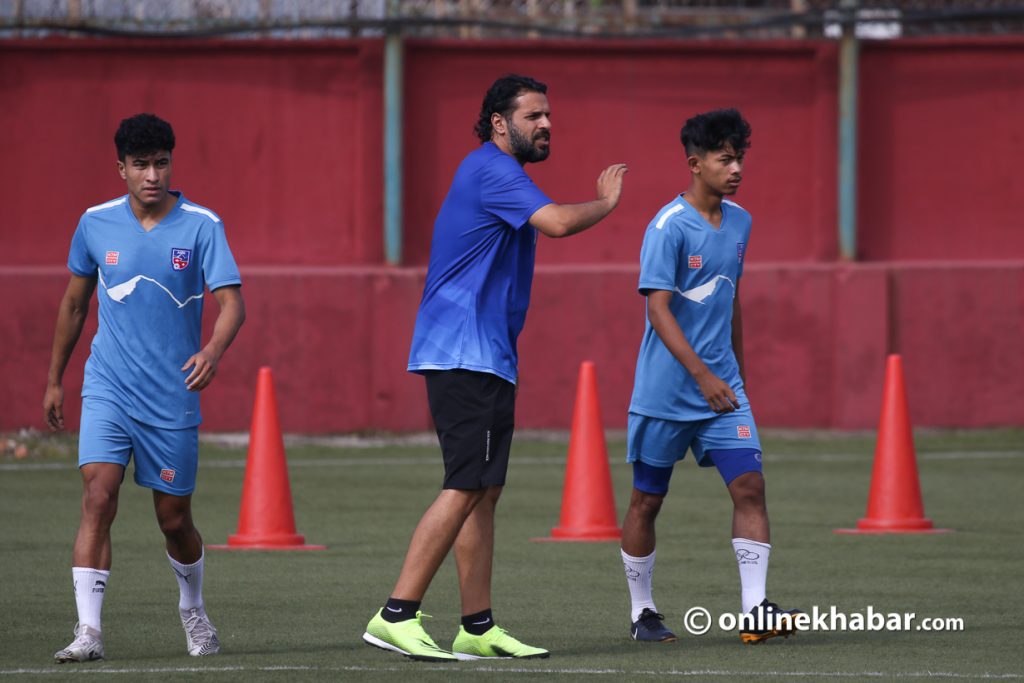
During the event, Abdullah Al Mutairi asked himself “We want to win Asian Cup and SAF Cup, but are we prepared for it from the basic level?”
Then, he answered, “In the 50 years of history of Nepal football, where are its grassroots? How concerned is the Nepali football sector to promote young players?”
Unless the country has active age-based teams and regular football competitions, it is irrational to see big dreams, he added.
He raised serious concerns about the effectiveness of grassroots programmes, and the sufficiency of quality football events, adding he wanted to select the players from among 100 to 200 talented footballers for a national team.
Agreeing with Abdullah Al Mutairi’s statement, Sanjeev Mishra, the ANFA league director and football analyst, also admits the country’s football sector lacks a doable plan and its effective implementation for the development of young players.
Don’t blame ANFA only
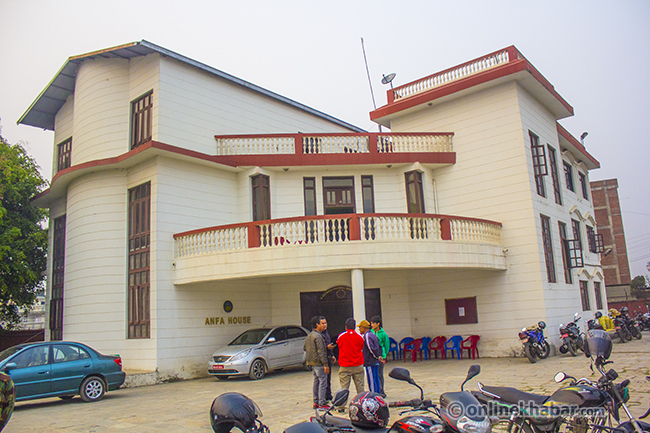
“It’s not that Nepali football does not have the grassroots. But, its effectiveness is questionable. The effectiveness of regular age-based competition is not seen,” says Mishra. “It is not easy to reach the national team even for the talented players who already have an identity in the grassroots.”
Mishra considers it a managerial weakness.
According to analyst Mishra, only the efforts by ANFA are not enough to develop football at the grassroots as demanded by coach Abdullah Al Mutairi.
“ANFA is not solely responsible for everything. If we look at the international trend, associations only look after management,” says Mishra. “The district football associations and clubs fall under ANFA. Likewise, A, B and C division clubs should also be active in the growth of football.”
Mishra argues that ANFA, indeed, has done something significant for the growth of grassroots football in Nepal. After ANFA established academies in Kathmandu, Butwal and Dharan in 2012, the grassroots programme was officially introduced in Nepali football. But, internationally, FIFA under its Financial Assistance Programme started providing financial aid for infrastructure, tournaments and grassroots in 1999. After three years, it was renamed a Goal Project.
All three ANFA academies were built under the FIFA aid. The current structure of Sadtobato academy is also a result of that aid, says Mishra. Still now, most of the national players are the products of the ANFA academy.
After Gianni Infantino was appointed as the 2016 FIFA president, he revised the Goal Project and developed it into the FIFA Forward Programme.
After Asian Football Confederation (AFC) made the AFC club licence mandatory for all the A division clubs, Nepal’s A division clubs are currently in the procedure to receive it.
To date, only four clubs–Tribhuvan Army Club, Machhindra Football Club, APF and Manang Marshyangdi Club–have received the licence. The basic criteria to hold an AFC licence is to have own academy and age-based teams. ANFA expects that in the near future, the clubs themselves will run the grassroots programmes and grow age-based football and there will come a time when it will not hear complaints like that of Abdullah Al Mutairi.
Expect something good in the future

As the clubs will be running their own academies, the status of the Nepali football scene is also progressing, according to stakeholders. ANFA in coordination with departmental teams and schools is also conducting weekend programmes for the children aged between 6 to12.
“In every two years, there will be a nationwide selection of u-13 players,” says Karma Tshering Sherpa, the ANFA president tells Onlinekhabar. Just this year, clubs have started training for u-13 players also.
“After forming a team of all ages, we will host a league for the u-15 team. Likewise, we will also organise the tournament for u-13 and u-18 teams.”
Four years back while being elected as the president of ANFA, Sherpa pledged to give priority to the development of grassroots football. In this regard, in 2018, ANFA conducted a massive nationwide grassroots programme for the first time. Over 16,000 children were trained under the programme. Since then, due to the Covid pandemic, the programme has not continued.
As a result of that programme, in 2018 when the AFC licence holder A division club conducted a player selection programme, it received as many as 900 participants.
Apparently, Abdullah Al Mutairi did not pay attention to these developments in his remark.
But, today is different
Yet, for today, Abdullah Al Mutairi’s comment about a lack of grassroots is right as the national football team is forced to rely on a limited number of players.
When the other remaining club will receive an AFC licence and all the grassroots programmes that were halted due to the pandemic will resume, then only coach Abdullah Al Mutairi will get enough alternatives for the player selection.
This story was translated from the original Nepali version and edited for clarity and length.



